You'll love it if:
- You’re a long-time fan of Metroid
- You enjoy rewarding exploration
- You appreciate games with immersive worlds
- You prefer gameplay over story
Not for you if:
- You don’t play Metroidvania games
- You’re not a fan of backtracking
- You don’t like constantly respawning enemies
- You dislike games without auto-save functionality
When it first came out, Metroid Prime was an outlier for Nintendo’s beloved series. It brought the franchise into the third dimension when it launched on the Nintendo Gamecube in 2002, showcasing just how well the Metroid formula can work from a first-person perspective. After a successful re-release of the Metroid Prime Trilogy for the Nintendo Wii in 2009, Nintendo seemingly abandoned the Prime spin-off series for more traditional Metroid experiences.
With Metroid Prime 4 languishing in development hell, and with Metroid Dread becoming an instant success on launch, fans were hoping for the Prime games to make a comeback. On February 22, during one of Nintendo’s Direct live streams, Metroid Prime Remastered was announced and subsequently released on the same day on Nintendo’s digital storefront. With the physical release following on March 3rd, it was clear that Metroid Prime is back in the spotlight.
But how does Metroid Prime Remastered fair in 2023? Historically, Nintendo has done a decent job with their remaster releases, with titles like The Legend of Zelda: Skyward Sword HD bringing older titles to modern hardware with excellent results. However, with so many remakes and remasters of varying quality hitting the market, did Retro Studios do a good-enough job to justify re-releasing a now 20-year-old title for the third time?
TL;DR
Metroid Prime Remastered is a prime example of how remastering a beloved classic should look. Mechanically, the game is untouched and long-time fans will feel right at home. On a technical level, this is an unprecedented success for Retro Studios, a must-have for any Nintendo Switch owner. Samus is back, and she’s back for good.
Story – Immersive Environmental Storytelling
Metroid Prime Remastered is a game from a bygone era. Its story can be summarized in just a few sentences, and that’s its greatest strength. Players find themselves in the suit of Samus Aran, a bounty hunter on her way to a distress signal from a pirate spaceship.
After a short fight with the pirates, Samus finds herself tracking a dangerous creature known as Meta Ridley to a nearby planet, Tallon IV. There, players will explore, fight, and puzzle their way toward Meta Ridley, and ultimately, Metroid Prime, for a showdown before the credits roll.
Metroid Prime Remastered doesn’t use dialogue, exposition, or monologues to tell its story. Although you can turn expository narration on or off (we recommend that you turn it off for a more immersive experience), much of the game’s story will be left to you to discover.

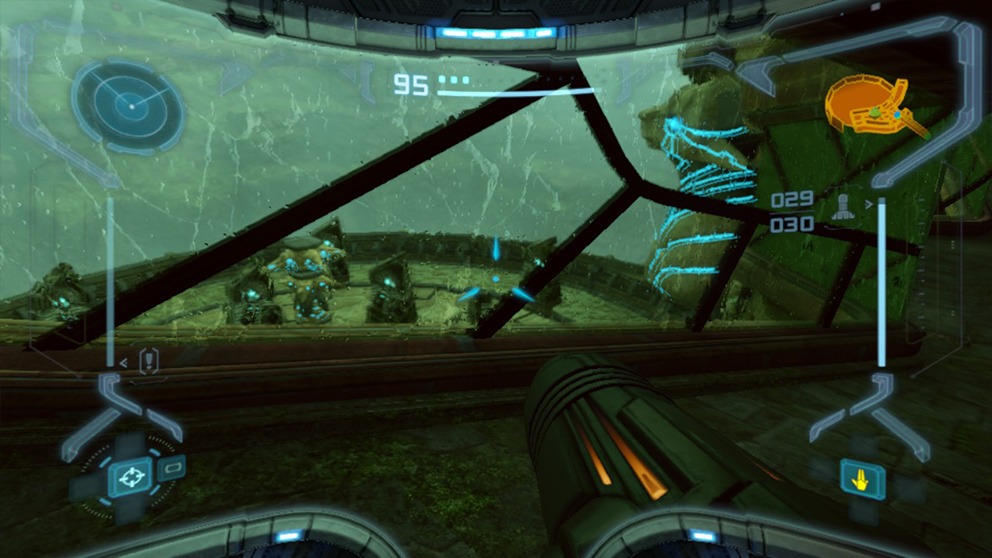

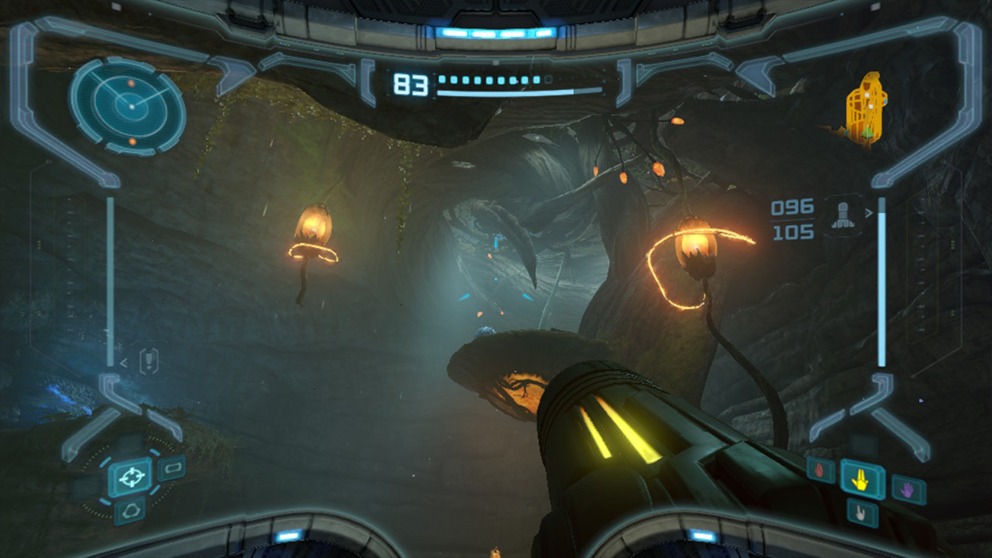
Exploring Tallon IV
Tallon IV is a planet with a rich history where an ancient civilization known as the Chozo once inhabited it. You’ll come across various tablets, inscriptions, and bits of lore about the Chozo, but these are nothing more than diary entries you’ll need to piece together yourself – or choose not to. The story takes a backseat in Metroid Prime Remastered and that’s not to the game’s detriment – quite the contrary.
Nintendo tried to humanize Samus once before in Metroid: Other M, to middling success. Fans were in an uproar that their beloved heroine is now an anime-inspired, insecure mess of a person instead of a stoic bounty hunter.
Metroid Prime Remastered harkens back to when players could insert themselves into Samus’ shoes and feel as if they’re the ones exploring Tallon IV. Paired with its detailed HUD elements in the form of Samus’ helmet visor, you’ll have a tough time finding any action platformer as immersive as Metroid Prime.

Gameplay – Where Metroid Truly Shines
Metroid Prime Remastered retains everything that made the original Metroid Prime such a success in 2002. Retro Studios took care not to change anything that would disrupt the flow of gameplay that the fans have come to know and love. Although the game is technically an FPS, it’s closer to an action platformer with combat elements sprinkled in.
There’s a heavy emphasis on exploration, puzzle-solving, and figuring out where the next upgrade you need to progress is. Each upgrade, ranging from missile expansions and health tanks to more game-changing ones like new suit variations or space boots, is a joy to discover.
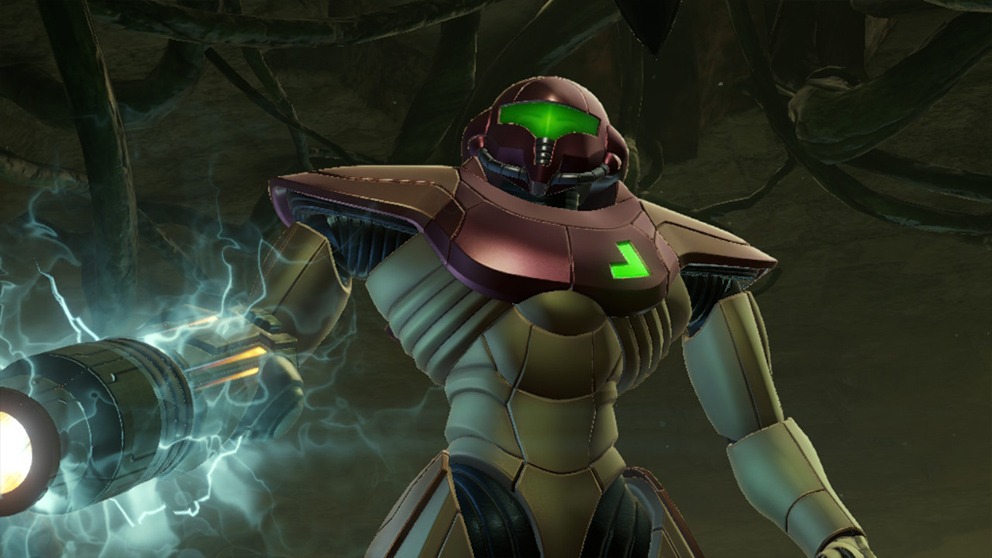
Rewarding your Curiosity
What the Metroid series has always done best is reward the players not only with new items but with a sense that you yourself have figured out how to get them. It’s why these games, Metroid Prime Remastered included, encourage replayability.
You likely won’t 100% the game on your first try (we only got to 68% completion before the credits rolled), and that’s okay. The game is designed to be a speed-running darling, with plenty of upgrades encouraging you to take shortcuts and run past obstacles you’ve been stuck at before. Metroid Prime Remastered truly favors its gameplay over storytelling and it’s refreshing to play an action platformer so confident in the former.
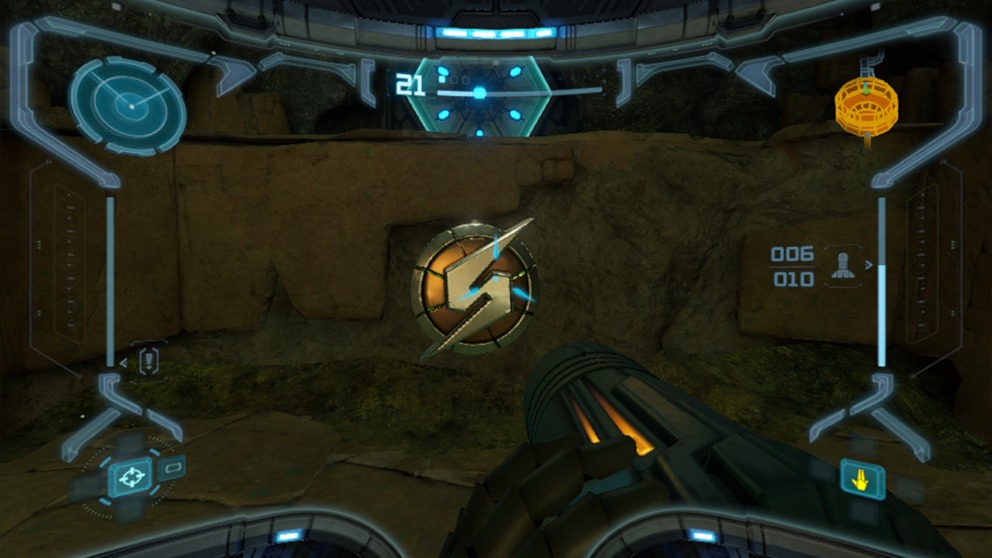
Healthy Mix of Combat and Brainteasers
Once you do come into contact with enemies, the game will give you several weapons to rely on. Samus eventually has four different beam weapons, plus their secondary fire modes (which are also secret unlockables you’ll have to find). Missiles and bombs are potent weapons with limited ammo, which you’ll also need to solve puzzles.
So, an element of resource management also comes into play when dealing with Tallon IV and its inhabitants. Metroid Prime Remastered uses boss fights sparingly but in a meaningful way. Each new biome you’ll explore is usually capped off by a unique boss fight which will grant you an important upgrade as a reward, such as a new suit.
The combat clearly isn’t the main focus in Metroid Prime Remastered, as enemies rarely react to your fire and simply take damage until they’re gone. It’s a more arcade-style shooting mechanic. It fits well in this mostly adventure-style game. What the game truly does well however is the fact that it never overstays its welcome. You’ll constantly feel like you’re on forward momentum like there’s a new upgrade or a new secret just around the corner.

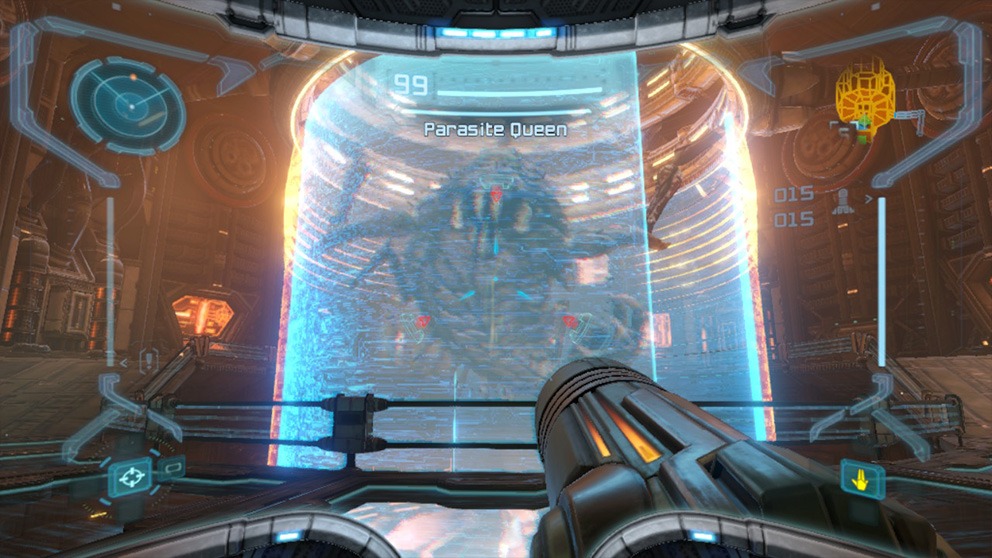

Different Visors Come into Play
A notable innovation Metroid Prime brought to the franchise comes in the form of Samus’ visors. You can swap between different visor modes depending on the situation to deal with the obstacles in front of you.
Your combat visor will help you lock on to enemies and fight them, the thermal visor will help you see heat signatures in low-visibility areas, etc. A visor you’ll rely on the most is the scan visor. It allows you to scan the environment for clues, lore, enemy weaknesses, and other important bits of information. This visor also plays into the game’s 100% rating, and you’ll have to scan everything on Tallon IV if you want to achieve it.
The best thing about it is that it’s never tedious to scan your environment. It’s always a fun process to enter a new area and figure out its history, what you can do there, and which enemies you’ll fight. Retro Studios did an outstanding job in balancing Metroid Prime Remastered in just the right way so that you’ll do a little bit of everything, but not too much of anything.


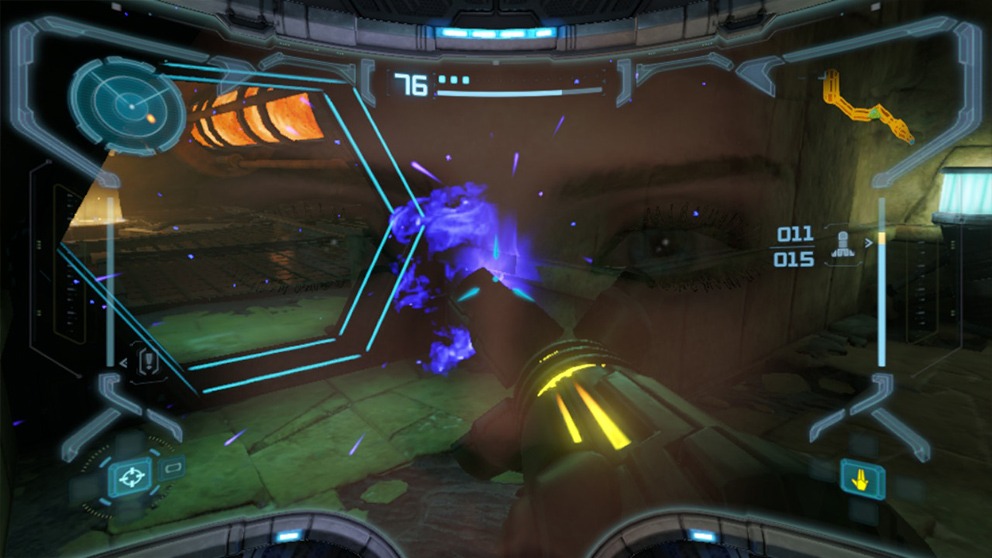
Visuals – A Stellar Showcase for the Nintendo Switch
Metroid Prime was nothing to scoff at when it first launched in 2002. The game was a 3D powerhouse on the Nintendo Gamecube, showcasing just how rich and detailed the environments can be on the console. However, concessions were made in terms of its scope, since most of its locations are corridors interspersed with loading screens.
This is true to form for the franchise, but it’s worth noting just “why” Metroid Prime Remastered looks and runs so well. The game runs at native 1080p at 60FPS in both docked and handheld modes. Paired with the visual upgrade Retro Studios pulled off, it’s remarkable that it plays so well and never dips below 60FPS, even during boss fights.
Whether you find yourself in the green jungles of Tallon IV Overworld or the desert temples in the Chozo Ruins, the game remains sharp, stable, and beautiful to look at. There’s no dynamic resolution scaling at work here – it’s solid 1080p throughout, an achievement in itself considering how games like Pokémon Scarlet and Violet perform on the platform.
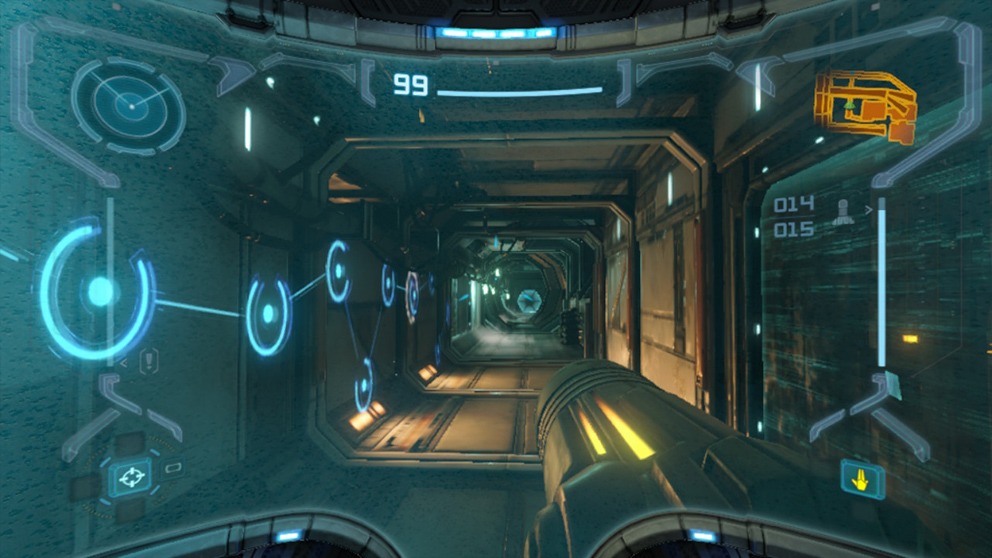
Flawless on the Technical Front
The technical updates don’t stop at the visuals, however. Given that the game first launched on the Nintendo Gamecube, and then was re-released on the Nintendo Switch, its controls were a big point of contention. Luckily, Metroid Prime Remastered sports several different control schemes you can choose from.
The game defaults to a dual-stick control scheme most suited to gamers who are used to playing FPS games and it works very well. However, it also features gyro and hybrid gyro controls which allow you to use Nintendo Switch’s motion sensors to aim and perform various in-game actions.
The team also went to great lengths to implement HD Rumble features into the game, which not many games sport these days. Your Joy-Cons will react in different situations, with varying degrees of vibration suited to whatever is happening on the screen. It’s a neat little addition and works well but you can turn it off to preserve battery life if you choose to.
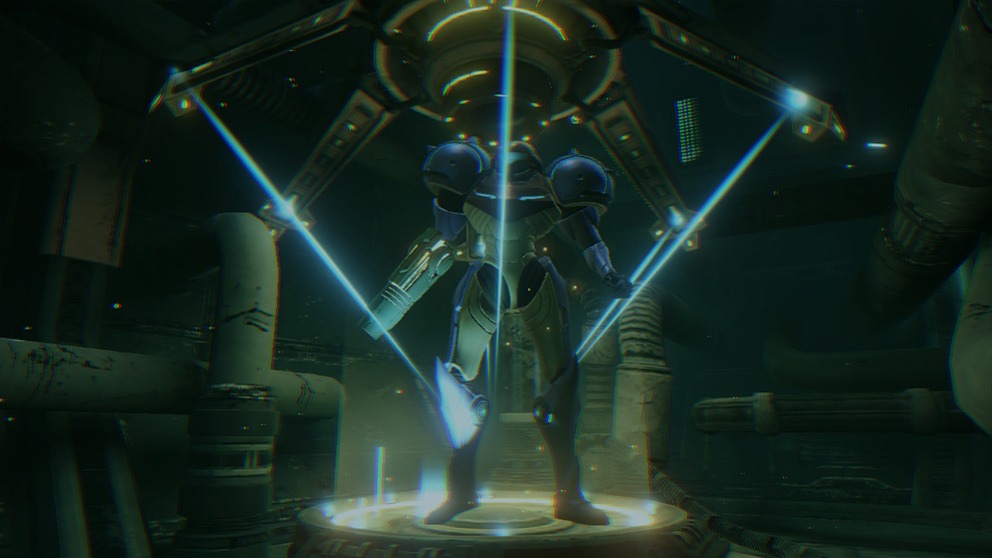
Audio – A Blend of Retro and Futuristic
Metroid Prime Remastered takes a cue from many other Nintendo franchises and doesn’t attempt to modernize its audio design too much. One of Nintendo’s charms is the fact that its games sound “retro”, and this one’s no exception.
Retro Studios remastered the game’s soundtrack but didn’t go overboard with the changes. Its main theme is as iconic as ever and features a nice blend of retro NES and SNES vibes paired with more futuristic synth effects. Sound effects are also appropriately retro, with the sound which plays when you pick up a new key item or an upgrade sounding especially rewarding and victorious.
Samus’ weapons sound like they came straight out of Star Trek, with beam weapons and missiles all having distinct sounds paired with the Nintendo Switch’s HD Rumble. Your console will appropriately vibrate to signal how powered-up your weapon is at the moment, for example, allowing you to gauge when to let the trigger go and shoot the enemy. It’s a small touch but it’s a welcome detail in an otherwise already-successful remaster.
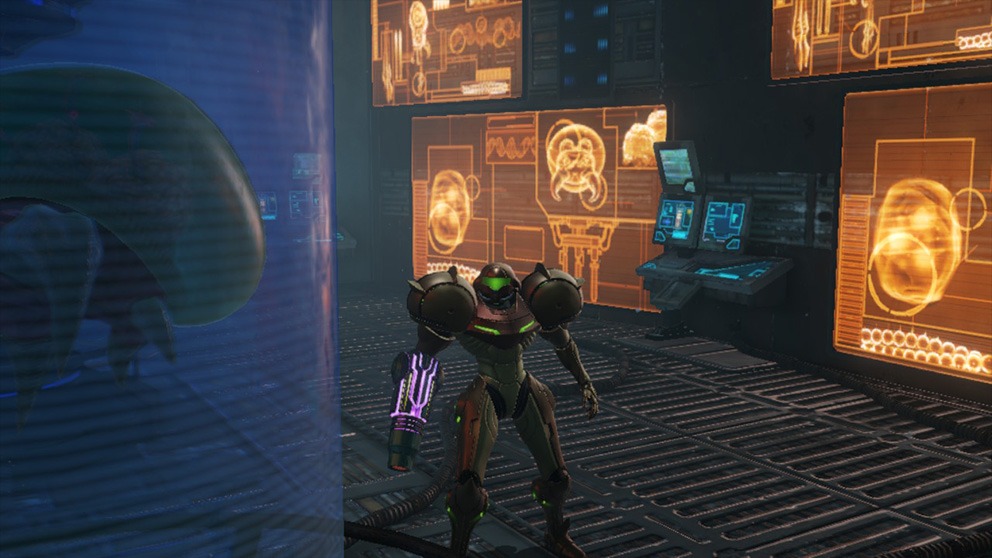
Conclusion – Should you Play Metroid Prime Remastered?
Metroid Prime Remastered is a must-play, must-own type of game. The fact that it plays as well as it does in 2023 as back in 2002 is a testament to how well its gameplay has aged. You’d be hard-pressed to find a Metroidvania in the last several years which does what this game did 20 years ago.
Its moment-to-moment gameplay is richly rewarding and you’ll constantly be greeted with discoveries, upgrades, and secrets throughout its 15-hour playtime. Best of all, the game is addictingly replayable, and you’ll even be rewarded with a secret ending alluding to Metroid Prime 2 for 100%-ing it. We can only hope that Retro Studios will take the success of Metroid Prime Remastered to heart and commit to remastering the rest of the trilogy, before ultimately releasing Metroid Prime 4.
With quality titles like Fire Emblem Engage and Metroid Prime Remastered hitting the Switch this early in the year, we can’t wait to see what’s in store for the rest of 2023. Metroid Prime Remastered is available exclusively on the Nintendo Switch.
Big thanks to CD Media for providing us with the review copy!
